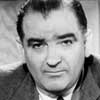
McCarthyism & Red Scare
Related History & Literature on Shmoop
Available to teachers only as part of the Teaching Cold War: McCarthyism & Red Scare Teacher Pass
Teaching Cold War: McCarthyism & Red ScareTeacher Pass includes:
- Assignments & Activities
- Reading Quizzes
- Current Events & Pop Culture articles
- Discussion & Essay Questions
- Challenges & Opportunities
- Related Readings in Literature & History